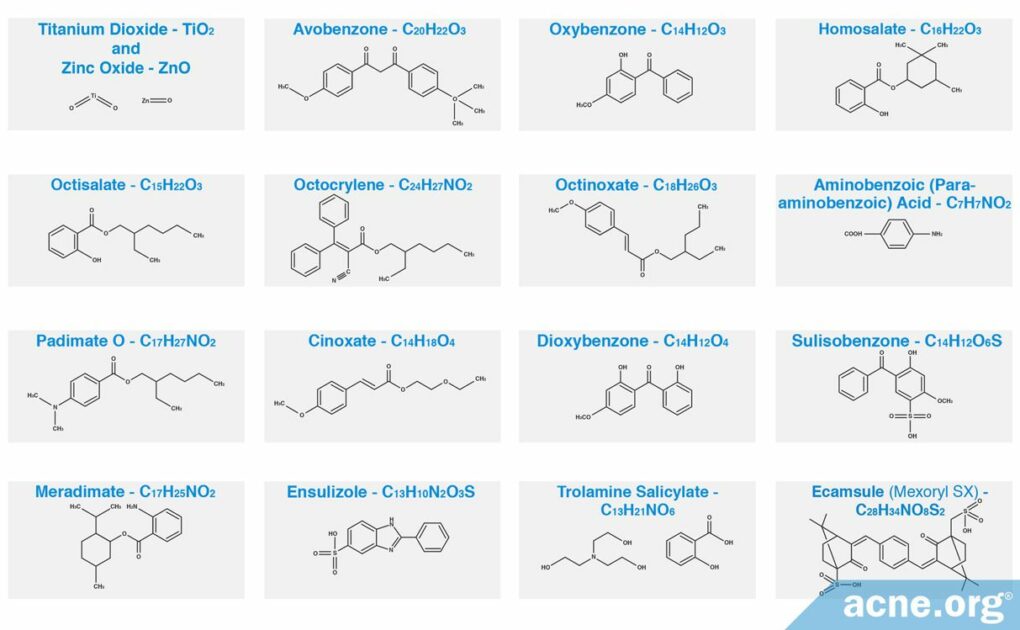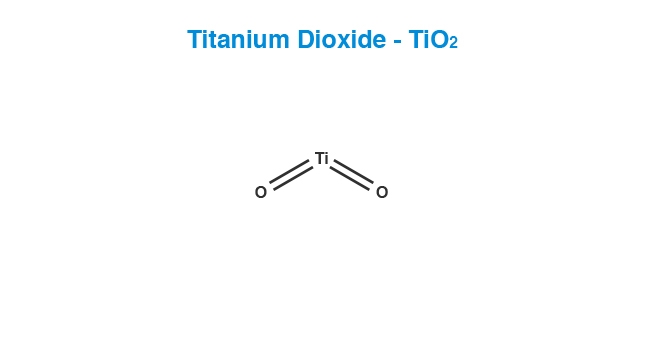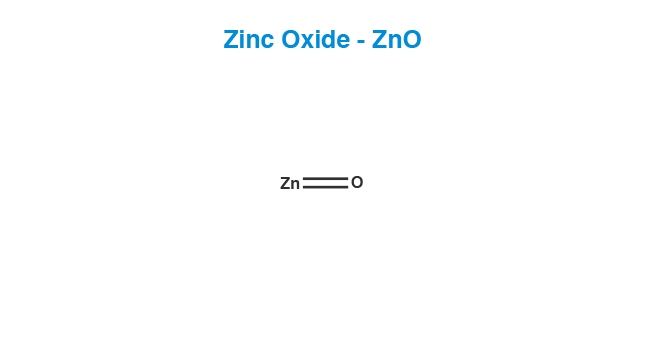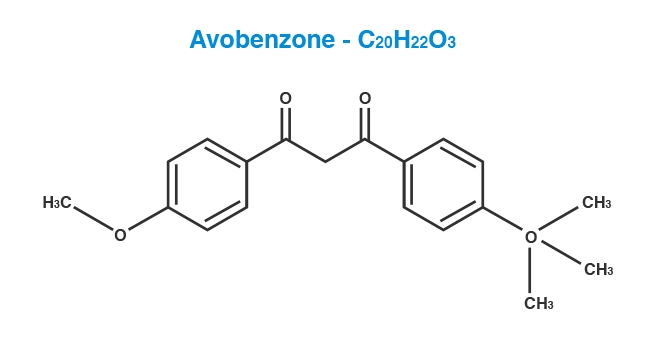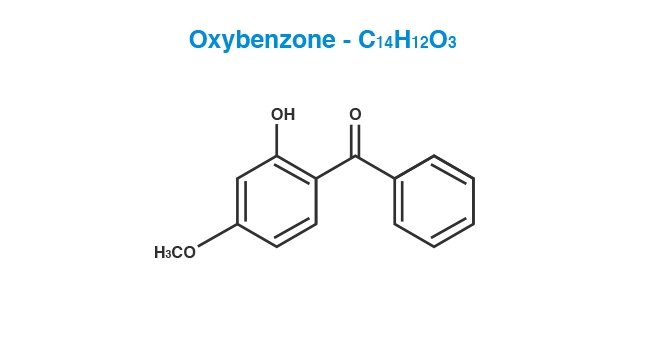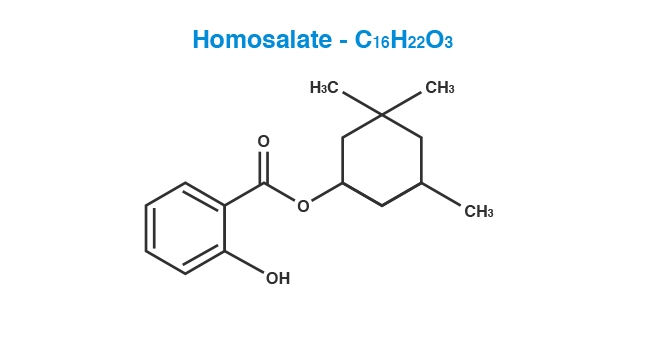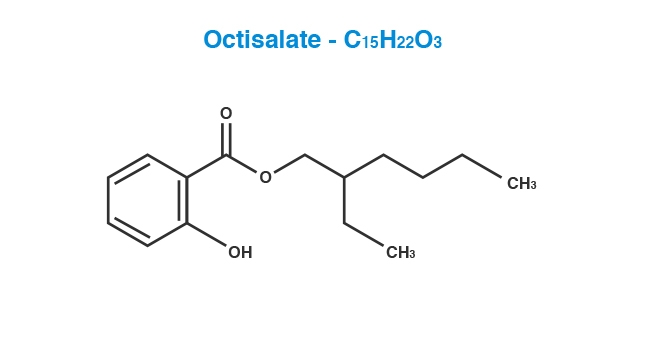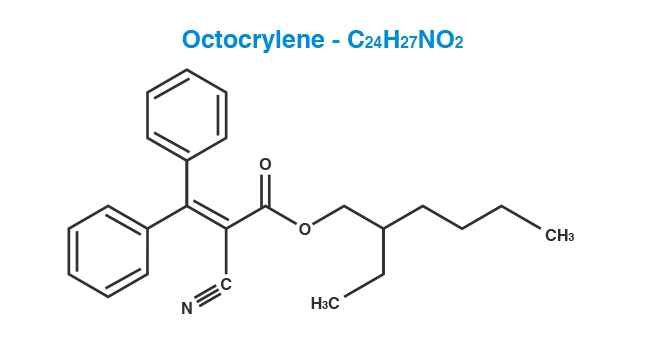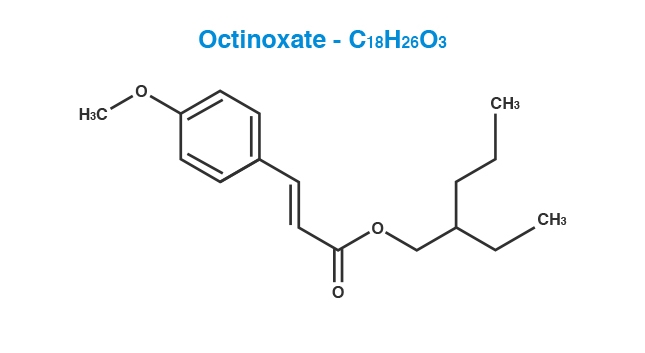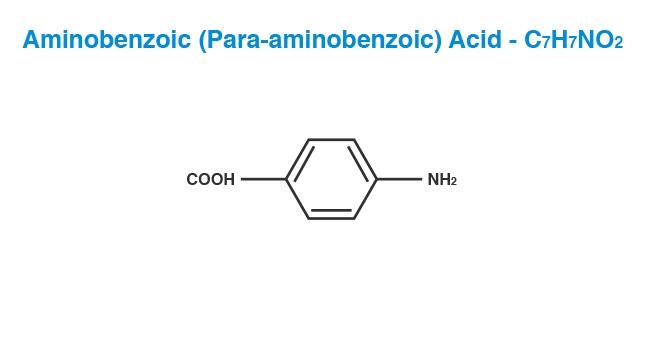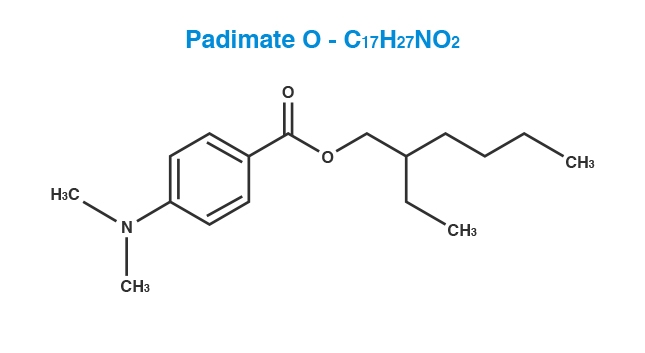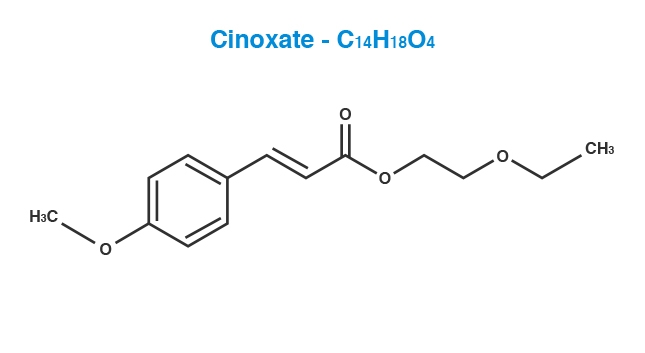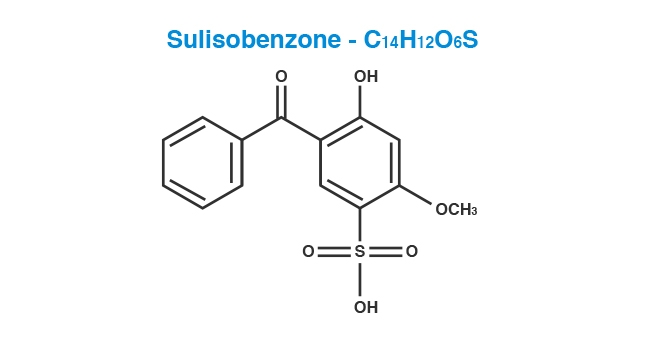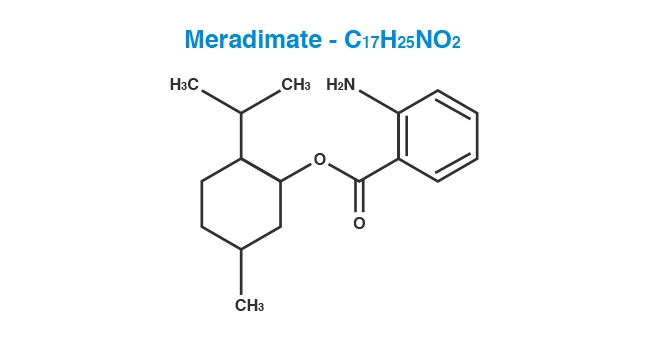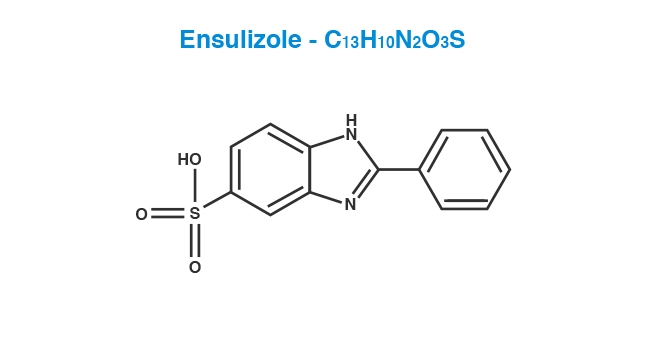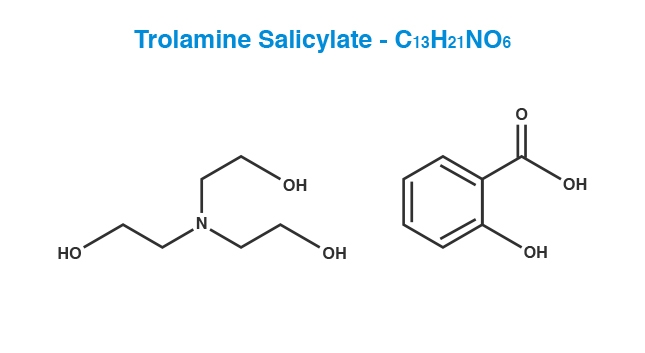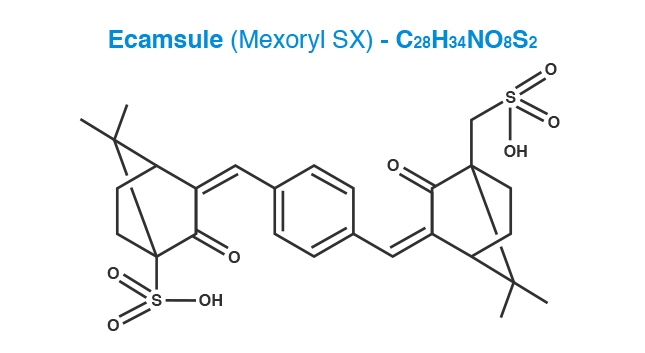As of 2017, the FDA Has Approved 17 Active Sunscreen Ingredients in the U.S., Though Only 8 of Them Are Commonly Used

The Essential Info
The FDA has approved 17 active sunscreen ingredients, but only 8 of them are commonly used in the U.S. These 8 are:
- Titanium dioxide (physical filter)
- Zinc oxide (physical filter)
- Avobenzone (chemical filter)
- Oxybenzone (chemical filter)
- Homosalate (chemical filter)
- Octisalate (chemical filter)
- Octocrylene (chemical filter)
- Octinoxate (chemical filter)
Physical Filters: Titanium dioxide and zinc oxide are called physical filters because they sit on top of the skin and partially reflect the sun’s rays. Sunscreens with either of these ingredients provide broad-spectrum protection against both UVA and UVB rays. Physical filters break down more slowly than chemical filters, which allows them to provide longer-lasting protection when compared to chemical filters. However, unfortunately, these two ingredients make sunscreens go on white or somewhat white, even when they are advertised as “micronized” or “goes on clear.” Many people also complain of a “tight,” “sticky,” or “yucky” feeling after they are applied. They also dry the skin and present a huge challenge when they are used with drying acne medications like benzoyl peroxide.
Chemical Filters: The rest of the available active ingredients in sunscreen are called chemical filters because they work by absorbing the sun’s rays, which creates a chemical reaction that renders the sun’s rays inert. Sunscreens with chemical filters last for only about 2 hours in direct sun before they are fully broken down, and then must be reapplied. No single chemical filter provides broad-spectrum protection on its own, so multiple chemical filters must be combined. They go on clear, do not dry the skin, and feel better on the skin compared to physical filters.
Selecting a Sunscreen: When selecting a sunscreen, look for one with an SPF 15 or above. Since SPF indicates only UVB protection, look for the term “broad-spectrum” to ensure that you get sunscreen that provides UVA protection as well.

The Science
- UVA Protection, UVB Protection, and Broad-spectrum Protection
- Physical Filters and Chemical Filters
- Active Sunscreen Ingredients Approved by the U.S. FDA
- Commonly Used Ingredients
- Rarely Used Ingredients
Sunscreen protects the skin from the sun’s damaging ultraviolet (UV) rays. In order to ensure the safety and efficacy of sunscreen ingredients, several countries, including the United States, have issued guidelines concerning the types of active ingredients that sunscreen should contain.1-3 This article includes the active ingredients approved only by the U.S. FDA (Food and Drug Administration).
UVA Protection, UVB Protection, and Broad-spectrum Protection
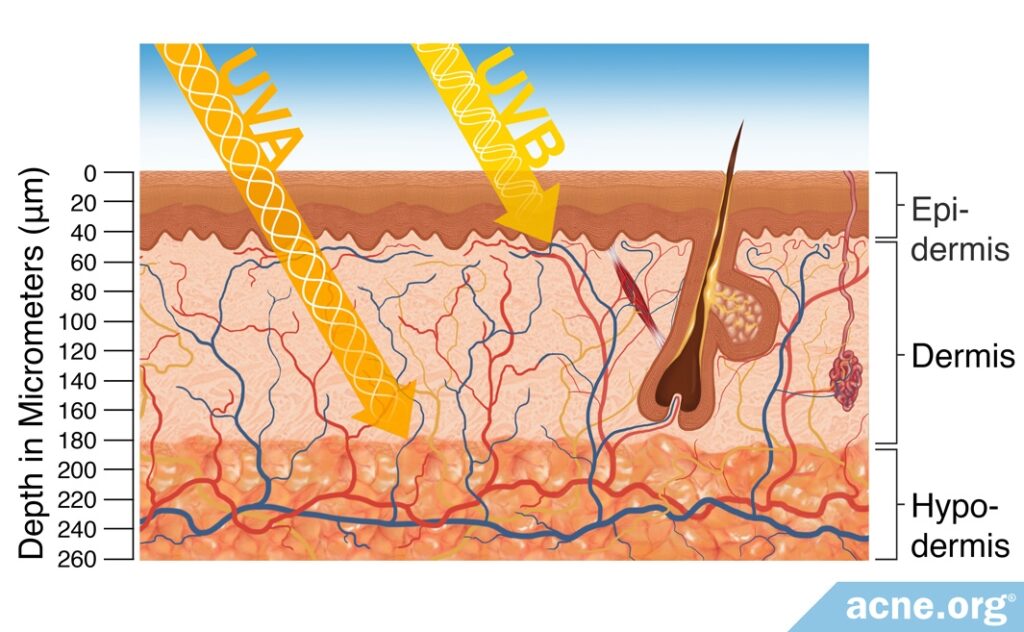
The sun emits two types of UV rays, both of which are harmful to humans: UVA and UVB. It is important to protect the skin against both types.
- UVA rays penetrate deeply into skin and connective tissue. They can cause extensive damage, including wrinkles, sunlight-caused skin diseases, and skin cancer. They are the main type of UV ray that causes the skin to tan.
- UVB rays do not penetrate as deeply as UVA rays, but they can cause severe damage, including sunburn and skin cancer.1 They are the main type of UV ray that causes burning of the skin, and can also contribute to tanning of the skin.
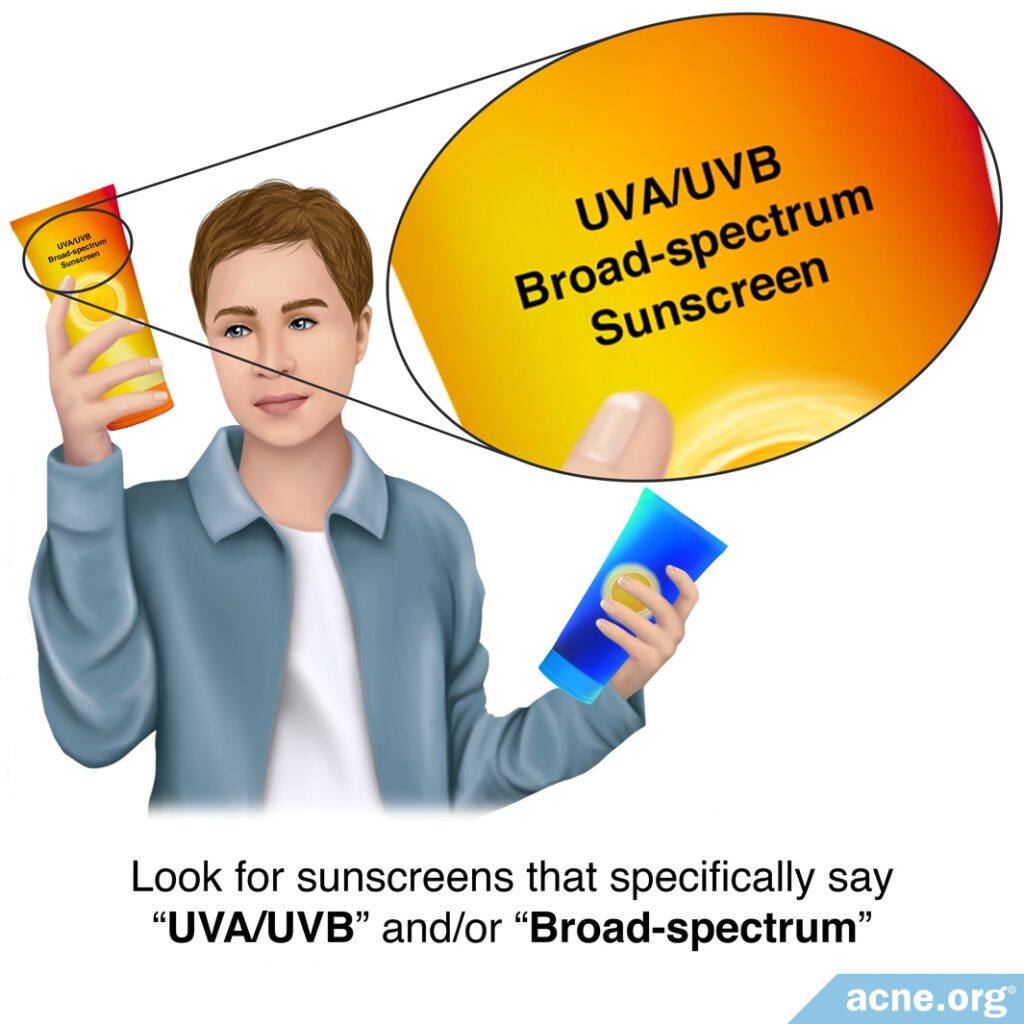
Researchers measure protection against UVB rays using the SPF (Sun Protection Factor) rating, which is displayed on sunscreen containers. Higher SPF numbers indicate a greater level of protection against these rays. While there is no similar standardized measure for UVA protection, many modern sunscreen products contain ingredients that protect against UVA radiation as well. These products are usually labeled as “broad-spectrum,” meaning that they protect against both UVA and UVB rays. The U.S. FDA guidelines encourage the production of sunscreen that provides broad-spectrum protection.1,2,4
Physical Filters and Chemical Filters
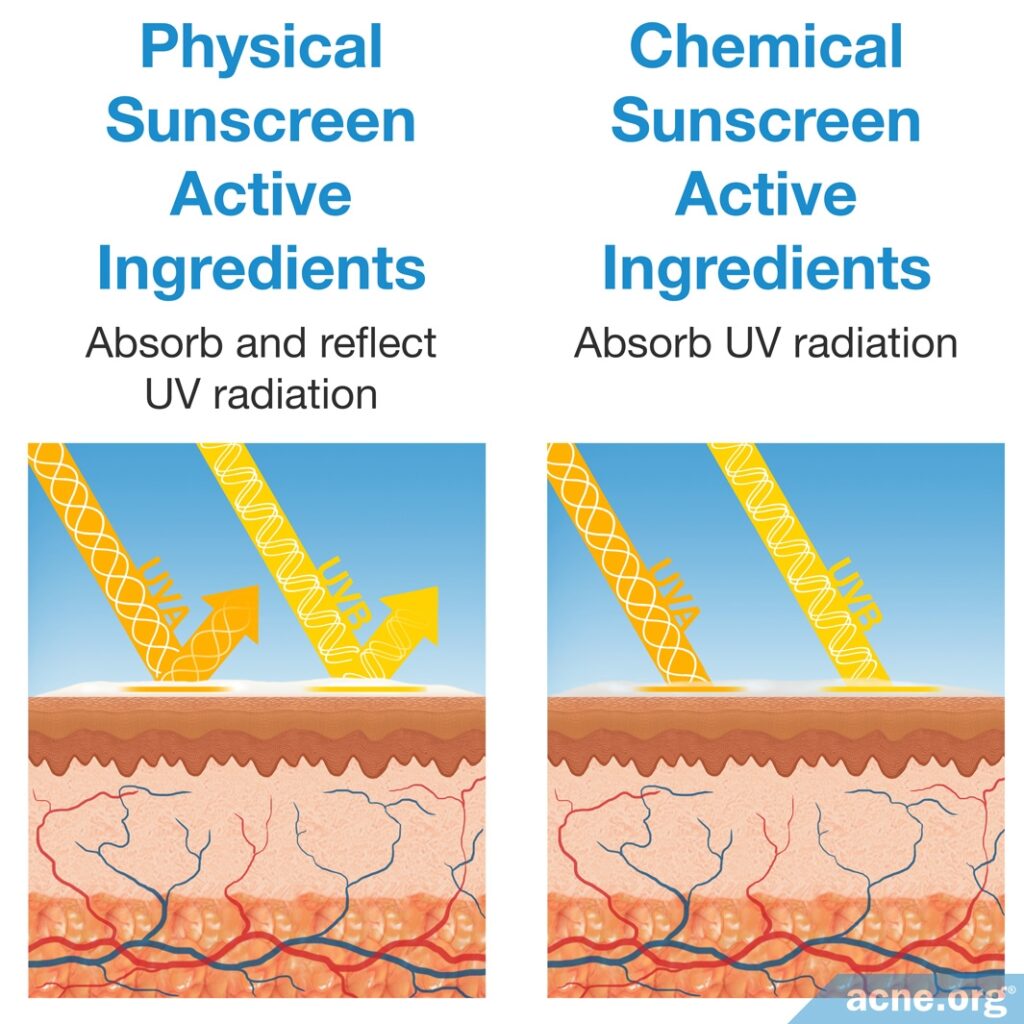
Scientists classify the active ingredients in sunscreen into two groups, both of which can be effective against both UVB and UVA radiation, depending on the ingredient.
- Physical filters are made from tiny physical particles that, when applied on top of the skin, absorb and reflect UV radiation. Zinc oxide and titanium dioxide are the only two physical filters approved by the FDA. They are the safest and most effective sunscreen ingredients and provide protection for a longer period of time when compared to chemical filters. However, they often appear white on the skin, and can leave an uncomfortable “film” type of feel on the skin. In an attempt to lessen these negative qualities, manufacturers now produce micronized (extremely small particle) zinc oxide and titanium dioxide, which help, but do not eliminate, the whitening and somewhat uncomfortable feel of physical sunscreen ingredients.
- Chemical filters are liquid ingredients that are added to sunscreens, which absorb UV radiation before it can penetrate the skin. Most active sunscreen ingredients are chemical filters. They don’t produce a white hue on the skin, and are more comfortable than physical filters to wear. However, chemical filters offer a shorter time of protection (2 hours), and are more apt to produce harmful molecules, called free radicals, when exposed to the sun.1,2
Active Sunscreen Ingredients Approved by the U.S. FDA
As of 2016, the U.S. FDA has approved 17 active sunscreen ingredients. Only 8 of them are commonly used in sunscreen in the U.S.3,5-7
Commonly Used Ingredients
Titanium dioxide is a physical sunscreen ingredient that provides broad-spectrum protection against both UVA and UVB rays. It can be used alone or combined with other active ingredients. Some sunscreen products contain titanium dioxide to help stabilize other sunscreen ingredients in the formulation, such as avobenzone, which breaks down in sunlight. Scientists consider titanium dioxide to be one of the safest and most effective sunscreen ingredients (only zinc oxide is more effective) and recommend that children and people with allergies or sensitive skin use it.1-3,8,9
Zinc oxide is also a physical sunscreen ingredient that provides broad-spectrum protection against both UVA and UVB rays. It can be used alone or combined with other active ingredients to make them more stable. Scientists consider zinc oxide to be the safest and most effective sunscreen ingredient and recommend that children and people with allergies or sensitive skin use it.1-3,8,9
Avobenzone is a chemical sunscreen ingredient that protects against UVA rays. Since it does not protect against UVB rays, it must be combined with other ingredients that provide UVB protection. Avobenzone breaks down quickly upon exposure to sunlight, so it must also be combined with other ingredients that can stabilize it. While it generally is considered to be safe and is approved by the FDA, studies on animals yield controversial results regarding whether it affects hormones in the animals studied, and further studies on humans are necessary to verify effects on them.1-4,10
Oxybenzone is a chemical sunscreen ingredient that provides broad-spectrum protection. While some studies indicate that it is safe, there have been a few cases in which people experienced serious allergic reactions to it. In addition, animal studies of oxybenzone yield the same controversial results as those of avobenzone, concerning whether it can negatively affect hormones within the body. Oxybenzone often is combined with avobenzone, as it can stabilize avobenzone.1-4,11
Octocrylene is a chemical sunscreen ingredient that protects against UVB rays. Because it provides strong protection, octocrylene is often combined with other UV filters that aren’t as strong. In addition, it commonly is combined with avobenzone, as it can also stabilize avobenzone. Scientists generally consider octocrylene to be safe.1-4,12
Octinoxate is a chemical sunscreen ingredient that protects against UVB damage. It is one of the strongest chemical UVB filters. Scientists generally consider it to be safe, though animal studies yield the same controversial results as avobenzone, concerning whether it can negatively affect hormones within the body. In addition, octinoxate, on rare occasions, can cause contact dermatitis or sun sensitivity reactions.1-4,12
Rarely Used Ingredients
Aminobenzoic, or para-aminobenzoic, acid (PABA) is a chemical sunscreen ingredient that protects against UVB rays. It used to be a common ingredient in sunscreen, but it poses problems that currently limit its use: it stains clothes, and it frequently causes allergic reactions, such as contact dermatitis and sun sensitivity, in people who are sensitive to it. PABA still is on the list of sunscreen ingredients approved by the FDA, though regulatory agencies in other countries, such as in Europe, have removed it from their lists of approved ingredients. In addition, some studies indicate that PABA can interact with the skin and produce oxidants.4
Padimate O is a chemical sunscreen ingredient that is derived from PABA. It carries the same UVB protection, potential for allergic reactions, and safety concerns as PABA. As with PABA, padimate O is not commonly used in sunscreen anymore. Animal studies yield the same controversial results as avobenzone, concerning its ability to affect hormones within the body.1,2,4,12
Sulisobenzone is a chemical sunscreen ingredient that protects mostly against UVB but also provides some UVA protection. Although it does not penetrate the skin much, it helps other chemicals to penetrate the skin. There is strong evidence that sulisobenzone can cause allergies and irritation in sensitive people, especially to the skin near the eyes. For this reason, scientists recommend that children and people with sensitive skin not use products with this ingredient.13
References
- Latha, M. S. et al. Sunscreening agents: a review. J. Clin. Aesthet. Dermatol. 6, 16 – 26 (2013). https://www.ncbi.nlm.nih.gov/pubmed/23320122
- Kaimal, S. & Abraham, A. Sunscreens. Indian J. Dermatol. Venereol. Leprol. 77, 238 – 243 (2011). http://www.ijdvl.com/article.asp?issn=0378-6323;year=2011;volume=77;issue=2;spage=238;epage=243;aulast=Kaimal
- The Skin Cancer Foundation’s Guide to Sunscreens, (2012) https:/www.skincancer.org/prevention/sun-protection/sunscreen/the-skin-cancer-foundations-guide-to-sunscreens
- Rai, R. & Srinivas, C. R. Photoprotection. Indian J. Dermatol. Venereol. Leprol. 73, 73 – 79 (2007). http://www.ijdvl.com/article.asp?issn=0378-6323;year=2007;volume=73;issue=2;spage=73;epage=79;aulast=Rai
- Reisch, M. S. After More Than A Decade, FDA Still Won’t Allow New Sunscreens 93, 10 – 15 (2015). https://cen.acs.org/articles/93/i20/Decade-FDA-Still-Wont-Allow.html
- Michele, T. M. Shedding some light on FDA’s review of sunscreen ingredients and the Sunscreen Innovation Act. U.S. Food & Drug Administration (2015). https://blogs.fda.gov/fdavoice/index.php/2015/02/shedding-some-light-on-fdas-review-of-sunscreen-ingredients-and-the-sunscreen-innovation-act
- Sunscreen active ingredients. U.S. Government Publishing Office https://www.ecfr.gov/cgi-bin/text-idx?SID=bc2d945fe89a3e7976979ddbf6a4462e&mc=true&node=se21.5.352_110&rgn=div8
- Sunblock. School of Medicine, University of California, San Francisco, 2011 www.dermatology.medschool.ucsf.edu/skincancer/General/prevention/Sunscreen.aspx
- A review of the scientific literature on the safety of the nanoparticulate titanium dioxide or zinc oxide in sunscreens. Australian Government, Department of Health and Ageing, Therapeutic Goods Administration (2009) https://www.tga.gov.au/sites/default/files/sunscreens-nanoparticles-2009.pdf
- Medeiros, V. L. & Lim, H. W. Sunscreens in the management of photodermatoses. Skin Therapy Lett. 15, 1 – 3 (2010). https://www.ncbi.nlm.nih.gov/pubmed/20532468
- Spijker, G. T., Schuttelaar, M. L., Barkema, L., Velders, A. & Coenraads, P. J. Anaphylaxis caused by topical application of a sunscreen containing benzophenone-3. Contact Dermatitis 59, 248 – 249 (2008). https://www.ncbi.nlm.nih.gov/pubmed/18844702
- Hayden, C. G., Cross, S. E., Anderson, C., Saunders, N. A. & Roberts, M. S. Sunscreen penetration of human skin and related keratinocyte toxicity after topical application. Skin Pharmacol. Physiol. 18, 170 – 174 (2005). https://www.ncbi.nlm.nih.gov/pubmed/15908756
- Sulisobenzone https://www.ewg.org/skindeep/ingredient/706390/SULISOBENZONE/#.W13AD9IzZPY
- Sunscreens: New wave in sun protection: blocking ultraviolet A. harvard Health Publication. Harvard Medical School. Harv. Womens Health Watch 14, 5 (2007). https://www.health.harvard.edu/newsletter_article/sunscreens_new_wave_in_sun_protection_blocking_ultraviolet_a
- Bastien, N., Millau, J. F., Rouabhia, M., Davies, R. J. & Drouin, R. The sunscreen agent 2-phenylbenzimidazole-5-sulfonic acid photosensitizes the formation of oxidized guanines in cellulo after UV-A or UV-B exposure. J. Invest. Dermatol. 130, 2463 – 2471 (2010). https://www.ncbi.nlm.nih.gov/pubmed/20574440
- Ensulizole https://www.ewg.org/skindeep/ingredient/702252/ENSULIZOLE/#.W13Bi9IzZPY
- Ault, A. FDA Questions Safety of 2 Sunscreen Ingredients (2015) https://webmd.com/melanoma-skin-cancer/news/20150302/ecamsule-enzacamene-sunscreen#1
 Acne.org Products
Acne.org Products